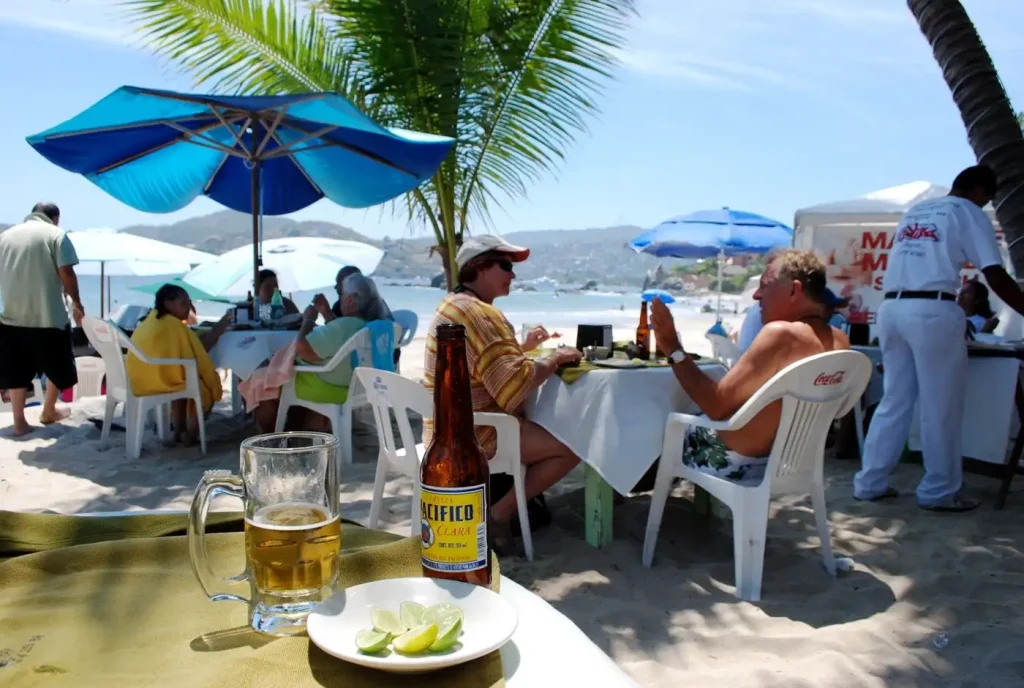Culture and Community, the Crux of Mexico Living

These two important Criteria are nested together for a reason. In whatever way you define “culture,” your engagements with neighbors and local lifestyle will be interpreted and explored only to the degree you accept and engage with the place you’re living.
Remember, at some point you’ve got to answer for yourself the question “What will I DO all day?”. Most Mexico places where Americans live are communities with social and cultural subsets; people are here for different reasons, have varied global views, and different lifestyles, education, and resources.
At one extreme are the all-in, Mexico-embracing, go-native cohorts that embrace Mexico for what it offers. I call them “Indigenous Gringos,” lovely people. On the other extreme are folks nestled in a bubble of familiar comforts and socialization. Embracing Mexico for a variety of reasons, these bubble people are out and about in communities, albeit experiencing mostly “transactional” engagement with local residents. The bubble people are also lovely.
Over time, Mexico migrants gravitate to one of these extremes, or find the right balance of “foreign” with “familiar.”
CULTURE means lots of things to lots of people. Let’s consider the case of Mexico.
“Culture is a word for the ‘way of life’ of groups of people, meaning the way they do things–an integrated pattern of human knowledge, belief, and behavior–the outlook, attitudes, values, morals, goals, and customs shared by a society.”
Approaching an understanding of Mexico’s cultural landscape is daunting. Mexico’s culture is old. It’s one of five spots on the planet where human culture first emerged. It’s one of the world’s top five most bio-diverse nations.
Mexico has more living Indigenous languages (68) than any country on earth (except India). It’s the birthplace of corn. It’s where the most dramatic event in human history (so say many historians) went down: the clash of Old and New worlds that forever changed human history–the Conquest of Mexico.
For many migrants, the first thing to forget is what you thought you knew about Mexico. So, put those stereotypes aside. Fresh eyes and an openness to question some longstanding beliefs — and confirm others will only make your Mexico for living journey richer.

The above chart describes my ranking for CULTURE around Mexico for living. It’s not hard to find FIVES across Mexico when it comes to this Criteria. Some states (like Oaxaca, Chiapas, and Yucatan, Puebla and Michoacan) are in some ways like “countries” in their ethnographic diversity.
In these rankings, beach resorts always rank lower. Regional ethnic overtones are prevalent (Mayan in the Caribbean, Purepechas and Huichol on the Pacific, Mixtec/Zapotec further south). These influences are enriching, don’t get me wrong. But resort living enrichment tends to be more “transactional” when compared with expat living in Mexico’s interior.

COMMUNITY, nested in my Criteria with CULTURE, should be a criterion you pay special attention to. Try to envision a typical “week” schedule. How will you pass your time? In the company of whom? The literature is rich about retirement living. Much of what’s written online talks about find your TRUTH or “reinventing.” You’ll find a range of germane topics covered here:
https://www.mexperience.com/lifestyle/retire-in-mexico/
Retirement in Mexico is evolving. Americans are arriving younger and staying longer. This wave of new residents is seeking socialization and a range of services that Mexico is grappling with, community by community. In the harshest sense, we of the north are “invaders”. In other ways we are economically “saving” communities and neighborhoods across Mexico.
There are degrees of engagement with Mexican people, and much is figured out by speaking and understanding Spanish. Learning a foreign language in not easy, however Spanish can be learned easier than almost any other language. Here are some learning Spanish options.
Thousands of foreigners live here just fine without improving their language skills. That’s a choice. Fellow English speakers are not hard to find, easier in resort settings.
Anglocentric community dynamics vary greatly from place to place. The Community Criteria looks to distill what matters when it comes to English/Anglo socialization.

There are some places that really excel in creating shared, multicultural socialization and enrichment. Some are beach destinations and other are altiplano, interior places. Two specific examples to consider are the Lake Chapala Society– www.lakechapalasociety.com–and Lakeside Little Theatre–www.lakesidelittletheatre.com. These are TWO examples of community engagement and personal enrichment in my town of Ajijic. Other organizations exist in places across the country, but these are two of Mexico’s oldest and most renowned.
Is a clearer focus coming into view? Feel free to write me at gcuster@choosingmexico.com I offer 1-2-1 consultation about the content of this e-learning course.



